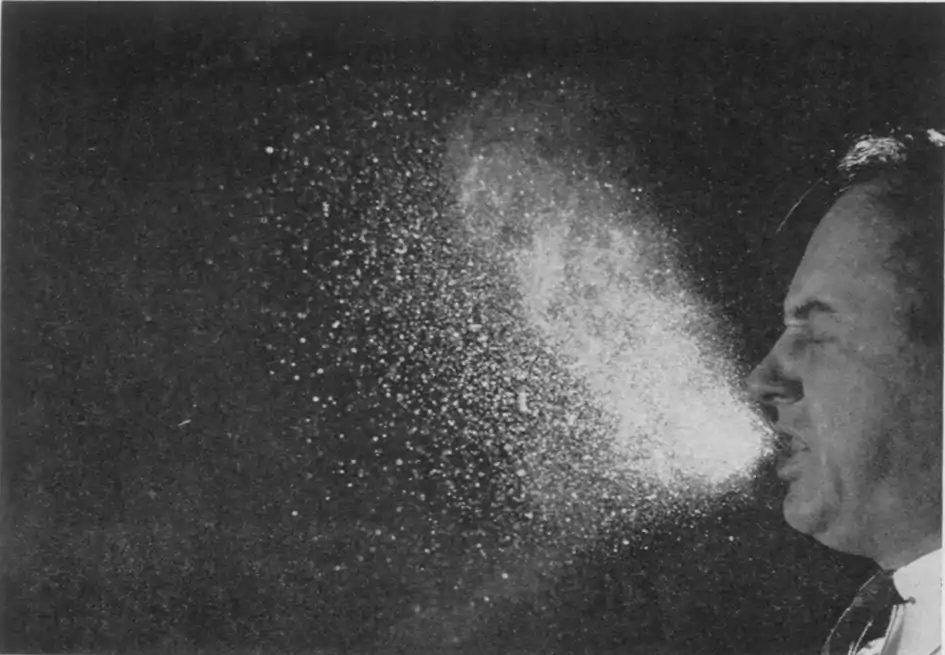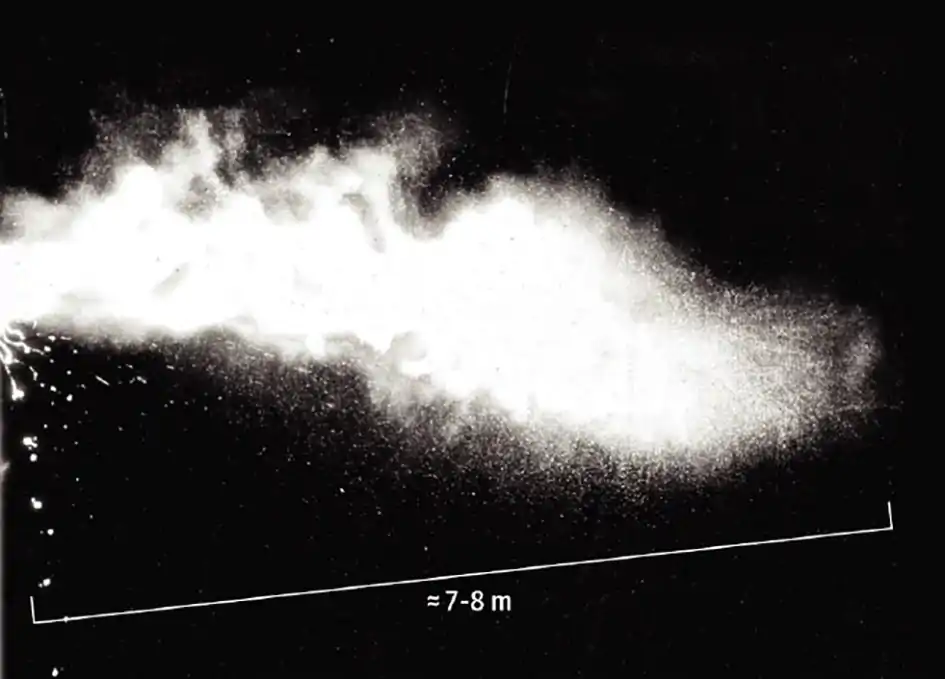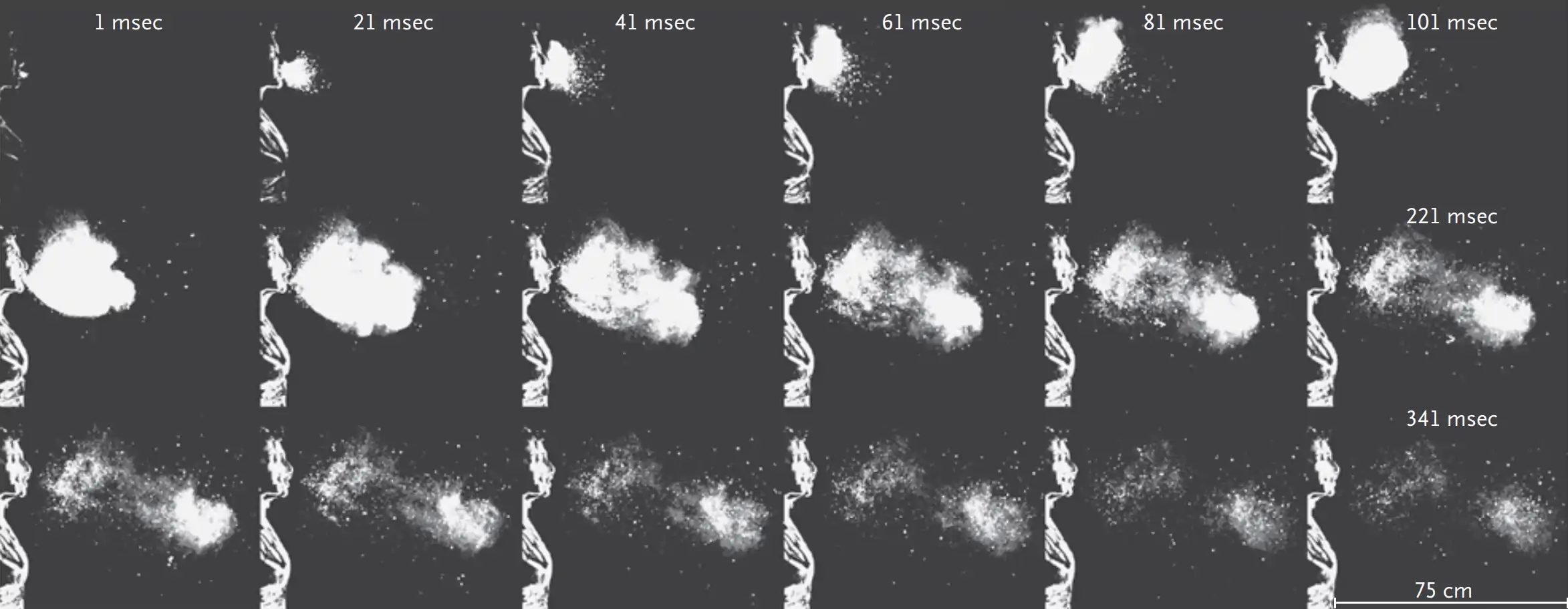Summary
- Scientists from the Massachusetts Institute of Technology and the University of Oxford argue that the six-foot rule is part of oversimplified, overly rigid, and outdated science. (source: Social distancing six feet apart is based on ‘outdated science,’ scientists say)
- Studies show that anywhere from 3 to 26 feet is needed to mitigate aerosolized water droplets, which are microscopic compared to larger sneeze/cough droplets on which the 6 ft. guidance is based on.
- 6 ft. can be too much or too little.
- Social distancing does not appear to achieve any public health objectives.
Details
- Originally proposed in 1897 by Carl Flügge, a German bacteriologist who studied the movement patterns of fluid droplets expelled from the mouth when speaking, coughing, or sneezing.
- Found that visible fluid droplets containing pathogens travel approximately six feet.
- 1940’s bacterium study confirmed this, but it also demonstrated that 10% of people produce droplets that go 9.5 ft.
- 8 of 10 recent studies demonstrate droplets travel > 6ft.
- One study showed an indoor sneeze traveling 20-26 ft.
- Oversimplification of the particle physics is a problem.
- It depends on various factors such as air flow modeling, temperature, viral survival, required critical viral load to cause infection, the type of virus, etc.
- 3 ft or 6 ft. may not be enough in some conditions, which is unsafe.
- In other cases, 6 ft. may be excessive and simply harmful to social, commercial, or other safety objectives.
- Distancing is in itself not a perfect solution by itself unless is it strict enough to be considered a quarantine.
- Note: Quarantines involve isolated a sick person. Lockdowns include everyone (the healthy). Social distancing is a hybrid strategy that is between unrestricted contact and quarantines/total lockdowns.
- Lockdowns have similarly proven to be ineffective.
- Also, older studies were all based on “large droplets”.
- Critical viral loads are carried by aerosolized respiratory droplets which cannot be seen by the naked eye.
- Spread of aerosolized droplets depends on many more things (talking vs. sneezing).
- Air currents greatly affect aerosols.
- Aerosols can remain in the air for up to 16 hrs.
- There is not a one-size-fits-all number for social distancing.
- There are too many factors to make it practical for social regulation.
- It is not effective enough to be considered protection.
- It might be best to quarantine sick people instead.


Most older studies focus on large droplets but viruses spread mostly by aerosolized respiratory droplets.
Social Distancing articles
| 32415 |  September 19, 2021
September 19, 2021
|
Why Does No One Ever Talk About Sweden Anymore? |
| 32335 |  September 16, 2021
September 16, 2021
|
Updates From Reiner Fuellmich About The Ongoing Crimes Against Humanity – September 2021 |
| 31159 |  September 8, 2021
September 8, 2021
|
New South Wales, Australia, Premier Promises Freedom Once 70% Double-Vaxxed Status Achieved – However, Non Vaxxed Will Remain Locked-Down |
| 30763 |  September 3, 2021
September 3, 2021
|
Dr. Dan Stock MD – Mount Vernon, Indiana School Board Meeting |
| 27760 |  August 23, 2021
August 23, 2021
|
Orthodox Priest Has A Strong Message To The Governments And Believers Regarding Lockdowns And Jabs |
| 25255 | August 20, 2021 | It Turns Out All Those Plastic COVID Barriers Might Have Made Things Worse |
| 2177 |  July 16, 2021
July 16, 2021
|
Social Distancing Guidelines Found To Be In Error | Fox’s Tucker Carlson Explains |
| 969 | July 5, 2021 | Free Your Face! UK to Ditch Mask Mandate After Lifting Lockdown |
| 965 | July 5, 2021 | The 6-foot rule is ‘outdated’: Researchers devise chart to gauge COVID risk |
| 963 | July 5, 2021 | 6 feet distancing goes back to the 1800s |


